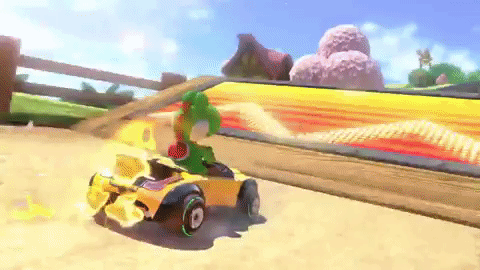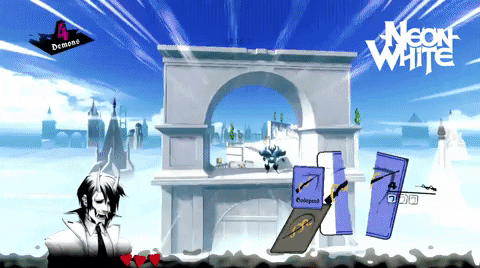
Tobor Quest
ROLE
Lead Designer
View Game
DESCRIPTION
Play as the newly created Turbo Tobor, as you brave the unpredictable campus terrain of Super-Floating University to become the most efficient robot in the Starfleet.
Levels progress in a series of isometric-style platforming sequences where timing, planning and reflexes determine your success.
Accept your delivery requests to get food to the masses in record time!
Tobor Quest Trailer provided by John Mai
YEAR
2022
GENRE
Physics-based time-attack
PLATFORM
PC
Design Process
At the University of Texas at Dallas' Game Lab course, I worked as the Design Lead over the Fall 2022 semester to create fun, interesting systems and mechanics that fit with our Directors' vision.
Our creative directors pitched their idea to us as an isometric time-attack game wherein the main idea was that the player would have to move through a series of four levels as fast as they could in progression. As Lead I had to oversee a team of 8 designers, including Game Designers, Narrative Designers, Level Designers, and UI Artists to create the documentation, game systems, levels, and overall feel of the game. It was our responsibility, as we were at the forefront of the pipeline, to make important decisions about how the game would play and feel--everything from the level of player control, to individual area design, to the slightest tweaks and balances pre-release.
I also had to efficiently communicate with other departments in order to get the vision (and important feedback) across the 40+ students working on the project.
The overall design of the game took inspiration from Mario Kart, Rocket League, at least from a control aspect, and Neon White. For the latter, we especially took inspiration in its level design, carefully hand-crafting each level with replayability in mind. Each level along your quest as the fastest delivery robot ever is meant to be played multiple times, with secret paths and optimal routes for the player to discover. The more they play, the better times they can get! This was our design philosophy from the beginning, so we also jammed each level with little bits of narrative, secret music, and secret areas that could entertain a player during their replays.


Mario Kart 8 Deluxe - Style and Racing

Neon White - 2022, Level Design
The challenge of being the Design Lead had not occurred to me when I was accepted into the course; however, the job was an endless juggle of all the skills I have learned. Essentially, I had to move from person to person making sure they understood their assignments, and when they didn't, I would lead them in the right direction. One day I would be helping design the base systems for the game, even writing the design documents in extensive detail, and the next I would be advising my level designers on the direction to go with their builds. This game became my life over the semester. I found myself spending hours on the team Discord communicating with other departments and overseeing everything in my own department. Every morning I grew the habit of checking the chat, seeing our progress, and playtesting the game in the afternoons. I would write notes on what to improve, what decisions had to be made, and what just was not working. Then I would come to our weekly meetings ready to talk to my team and figure out solutions. For example, when one of our level designers up and left the course completely, I had to talk to our other designers and scramble for a solution. We knew we wanted four levels, and didn't want to cut one if we didn't need to. One of our designers had the idea to simplify the final level, making it just a rush of speed. This gave us plenty of space to add a conclusive final level, though unfortunately did not give it much replayability (which resulted in us adding a lot of visual elements and secrets).
This kind of compromise happened a lot during development. Many of our original ideas were scrapped or repurposed because they were out of scope, underused, or simply could not be made by the programming team in the given timeframe. From the unused "tumble" mechanic, to the little air control that Tobor has, there were mechanics that we simply had to move on from in order to polish the mechanics that did work. Overall, it became incredibly important to talk to and be open with every team lead, so that there was no confusion. At some points, I worked hand in hand with other departments to extend our teams design philosophy, which seemed to help.
And communication itself was not without challenge either. We lost a team member early in development with no warning, which threw us for a loop, but later we actually lost our team's manager. Up until that point, I had been managing the team a great amount anyways because our project manager lacked experience and communicated very little. I did my best in that time, and I like to think we were somewhat organized; but I was doing the job of someone else. Then, he up and quit. We were assigned a new manager shortly after, and immediately felt the difference between them. These problems were solved, but they taught me lessons in being transparent with everyone in the pipeline, and saying we needed help when we did. I had put too much on my shoulders, and unbeknownst to me, had spread my team too thin. Other issues arose between designers, as well, but they were similar problems with communication, and talking to the team members fixed it.
Thankfully, it all came together in the end. We completed the game with plenty of time for polish, and were pretty happy with the product.
If this experience is any indication at what life would be like within the industry's walls, I am ready to walk in.

Tobor Quest
Game Lab F22
That's me!
